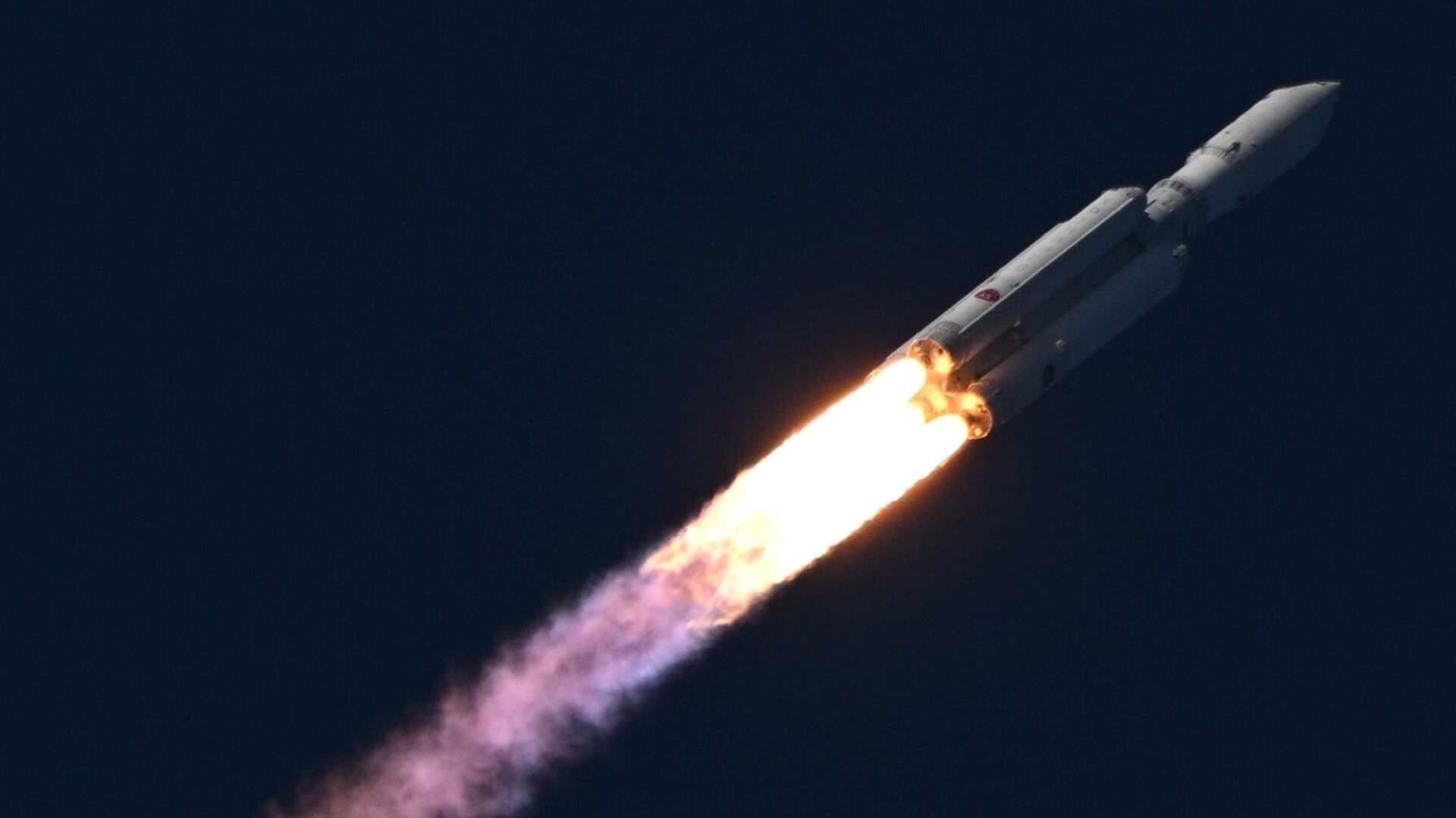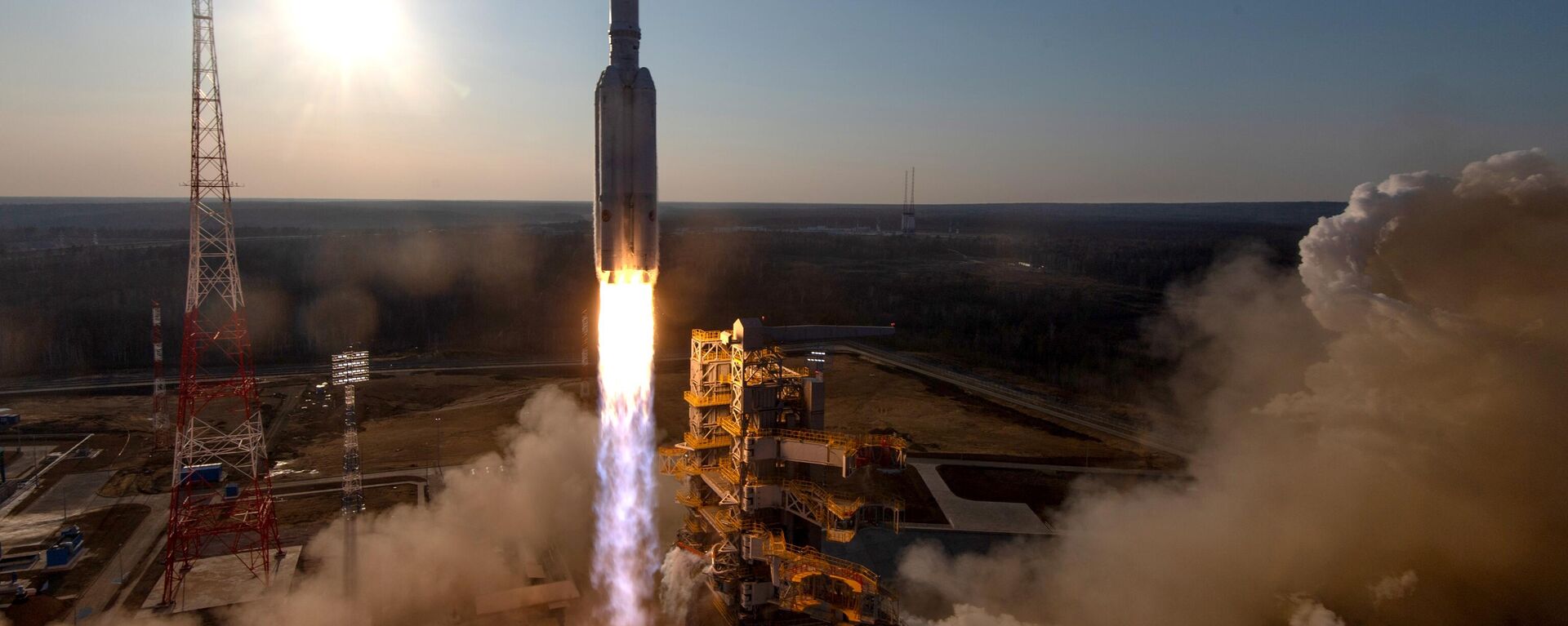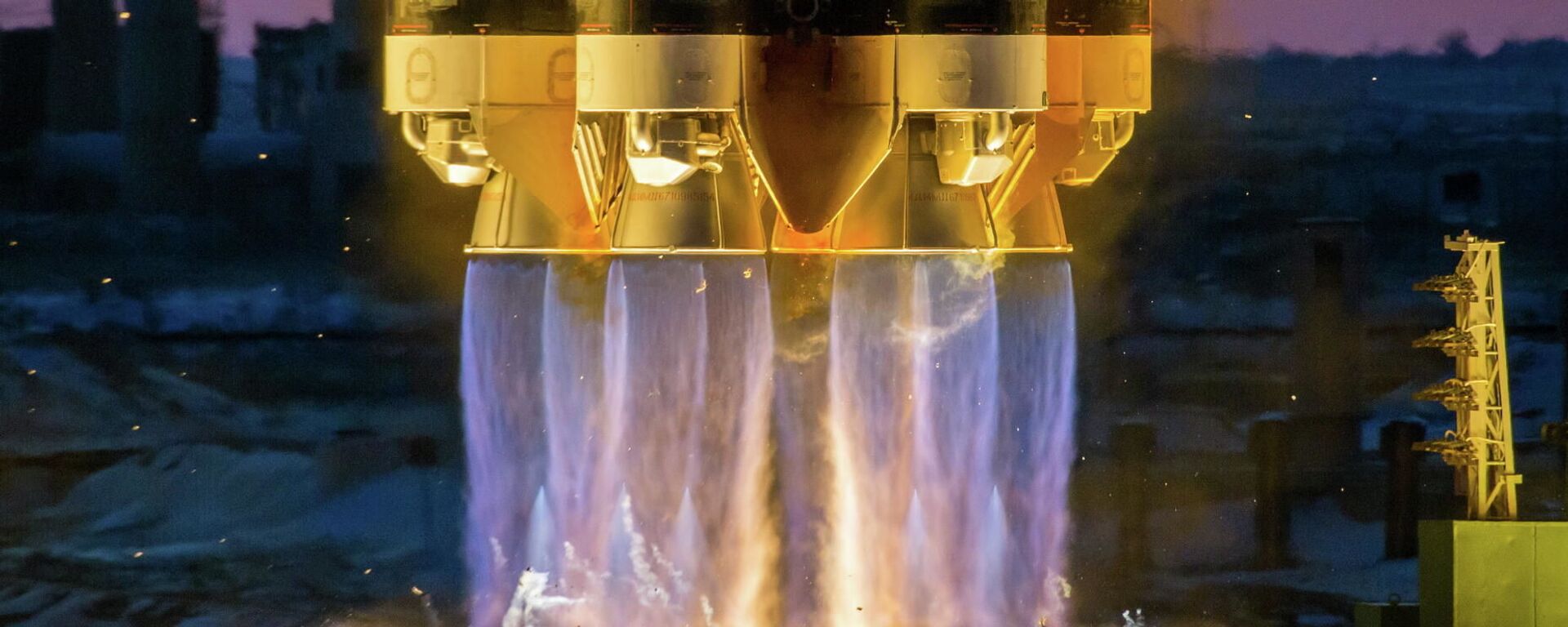https://sputnikglobe.com/20240423/whats-next-for-russias-angara-space-rocket-1118062363.html
What's Next for Russia's Angara Space Rocket?
What's Next for Russia's Angara Space Rocket?
Sputnik International
The Angara-A5 rocket, which will replace the Soviet-era Protons flying from the Baikonur spaceport operated by Russia in Kazakhstan, was first launched from the Vostochny cosmodrome on April 11, 2024.
2024-04-23T10:00+0000
2024-04-23T10:00+0000
2024-04-23T19:21+0000
beyond politics
alexei varochko
russia
baikonur
khrunichev center
angara
angara-a5m
space exploration
vostochny cosmodrome
russian space programs
https://cdn1.img.sputnikglobe.com/img/07e8/04/0b/1117866482_0:0:1791:1007_1920x0_80_0_0_a0d30ecd34dce2efa758cb0743840b61.jpg
The historic launch was made possible thanks to the tremendous work of engineers and designers who are now working on Angara's more advanced future iterations.What differentiates the Vostochny cosmodrome, located in the Amur region in the Russian Far East, from the previously-used Plesetsk Cosmodrome in Russia’s north is its “increased load capacity, which includes a hydrogen-powered stage,” Alexey Varochko, the Director General of the Khrunichev Space Research And Production Center, told Sputnik.Themuch-anticipated launch involved comprehensive groundwork, including electric launch vehicle tests and the rocket’s new flight program that takes into account Voctochny’s specific launch features, Varochko revealed.The expert also shed light on Angara’s updated features currently in development with the Angara-А5М model. “According to the plans of the Khrunichev Center, the Angara-A5M rocket is to be built 2025,” he added.The rocket is designed to deploy heavy payloads into a low Earth orbit, boosting Russia’s satellite coverage. But the Angara is not just a mere delivery vehicle, its potential use go far beyond that.Turning to international cooperation in space exploration, Varochko touched upon bilateral agreements between the Khrunichev Center and Boeing. The two reached a deal from 2021 to 2024, under which the center would purchase spare parts and replacement units for the Zarya (Dawn) Functional Cargo Block (FCB).
https://sputnikglobe.com/20240412/why-angara-a5s-launch-ushers-in-new-era-for-russias-space-exploration-1117899968.html
https://sputnikglobe.com/20240423/roscosmos-offers-kazakhstan-to-continue-proton-rocket-launches-from-baikonur-after-2025-1118068002.html
russia
baikonur
Sputnik International
feedback@sputniknews.com
+74956456601
MIA „Rossiya Segodnya“
2024
Sputnik International
feedback@sputniknews.com
+74956456601
MIA „Rossiya Segodnya“
News
en_EN
Sputnik International
feedback@sputniknews.com
+74956456601
MIA „Rossiya Segodnya“
Sputnik International
feedback@sputniknews.com
+74956456601
MIA „Rossiya Segodnya“
russia's space program, russia's new rockets, new russian missiles in space, russia's new angara space rocket, angara capabilities, angara launch
russia's space program, russia's new rockets, new russian missiles in space, russia's new angara space rocket, angara capabilities, angara launch
What's Next for Russia's Angara Space Rocket?
10:00 GMT 23.04.2024 (Updated: 19:21 GMT 23.04.2024) The Angara-A5 rocket, which will replace the Soviet-era Protons flying from the Baikonur spaceport operated by Russia in Kazakhstan, was first launched from the Vostochny cosmodrome on April 11, 2024.
The historic launch was made possible thanks to the tremendous work of engineers and designers who are now working on
Angara's more advanced future iterations.What differentiates the Vostochny cosmodrome, located in the Amur region in the Russian Far East, from the previously-used Plesetsk Cosmodrome in Russia’s north is its “increased load capacity, which includes a hydrogen-powered stage,” Alexey Varochko, the Director General of the Khrunichev Space Research And Production Center, told Sputnik.
Themuch-anticipated launch involved comprehensive groundwork, including electric launch vehicle tests and the rocket’s new flight program that takes into account Voctochny’s specific launch features, Varochko revealed.
Introducing the Angara space complex allows Russia to launch various types of spacecraft from its territory, relying only on domestic production.
The expert also shed light on Angara’s updated features currently in development with the Angara-А5М model. “According to the plans of the Khrunichev Center, the Angara-A5M rocket is to be built 2025,” he added.
The rocket is designed to deploy heavy payloads into a low Earth orbit, boosting Russia’s satellite coverage. But the Angara is not just a mere delivery vehicle, its potential use go far beyond that.
“Angara A5 can be used not only for delivering heavy vehicles to geostationary orbit, but also for carrying out group launches of [different] spacecraft into the sun-synchronous orbit (SSO),” the CEO explained.
Turning to international cooperation in space exploration, Varochko touched upon bilateral agreements between the Khrunichev Center and Boeing. The two reached a deal from 2021 to 2024, under which the center would purchase spare parts and replacement units for the Zarya (Dawn) Functional Cargo Block (FCB).
“Yes, there is such an arrangement. [The deal] provided for purchasing consumables and replacement equipment for the Zarya FCB," Varochko said. "Between 2021 and 2024, the new Boeing contract included a few dozens of accessories, spare parts and tools ordered, manufactured and delivered, on top of the replacement equipment produced and delivered earlier,” he specified.




